By Ted Scull.
The Caribbean hurricane season officially falls between June 1 to November 30, and this year’s predictions are slightly more hurricane activity expected than normal. While storms arise year-round and their frequency and intensity vary, most people associate the summer and early fall in the Caribbean as the epicenter of potential turbulence. That is true unless you live on the Eastern Seaboard, where winter nor’easters can be just as intense. However, the small ship cruise industry moves elsewhere by the late fall and does not start up again until the late spring.
Tropical storms form off West Africa and usually aim for the heart of the cruise industry’s most popular region — the Caribbean Islands. However, most depressions peter out before they arrive there, and if one continues to increase in intensity, it is closely monitored by weather forecasters. The cruise lines have access to this information 24/7, and if there is a chance that one of their ships is in the storm’s projected path, the captain reacts accordingly and alters course to stay a safe distance from the powerful winds and heavy seas. That may mean changing an itinerary, skipping a popular port and seeking shelter in the lee of the storm.
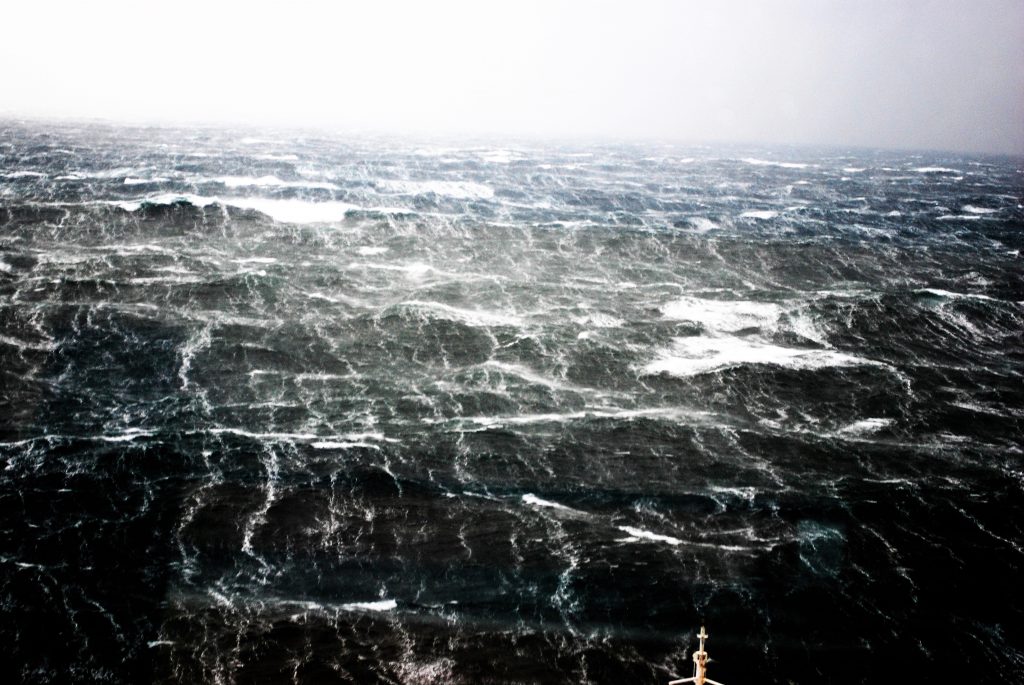
A Streaked and steely sea. * Photo: Ted Scull
When it comes to weather, small ships have one major advantage over the big cruise ships — many more places to ride out a storm.
In the Northeast, the big ships sail from Boston, New York, and occasional other ports to Bermuda, and they may be affected by some heavy seas crossing the Gulf Stream. However, a captain will not make the crossing if the forecast is for severe weather conditions. The same is true for big ships sailing from New York to the Bahamas and the Caribbean. In this case, sailings are year-round, so winter storms or nor’easters may crop up well outside of the normal hurricane period. While sailing in rough conditions is seldom dangerous, it can make passengers seasick, and if passengers elect to move about the ship during a storm, there may be injuries. If you feel at all uncertain of walking in rough conditions, don’t. Stay in your cabin. A rough sea can be very unpredictable, and you may not be able to see an unusually large wave coming.
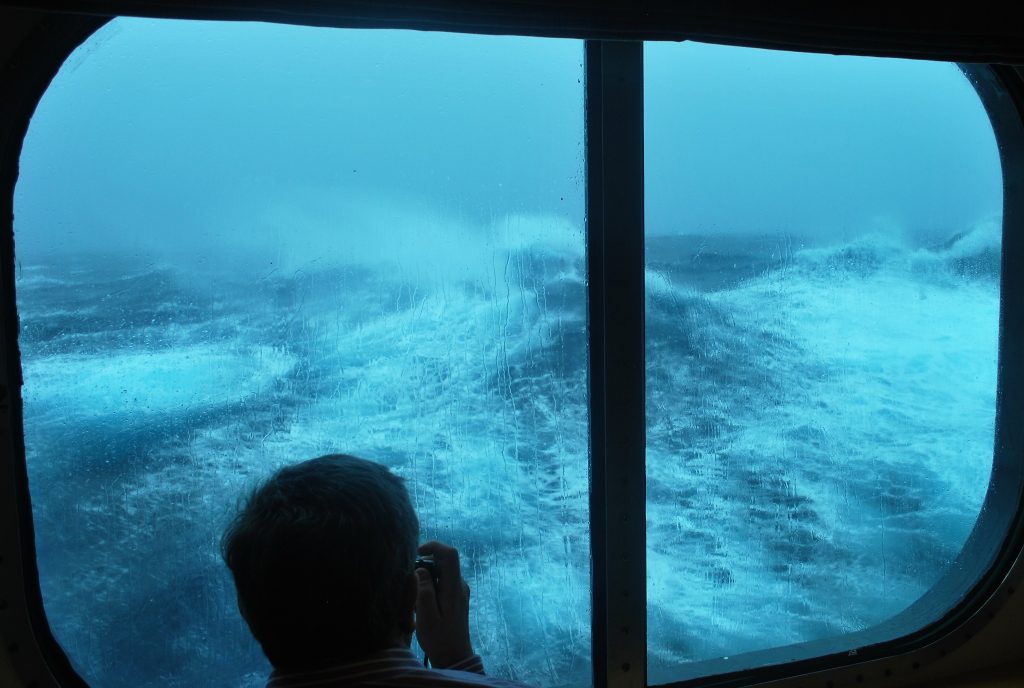
Capturing the captivating sea. * Photo: Ted Scull
Small ships cruising the New England Islands and the coast of Maine have numerous safe harbors to wait out a storm, and with the exception of the stretch of open ocean along the New Jersey coast, most of the east coast route is in protected waters — Long Island Sound, Chesapeake Bay, and the Intracoastal Waterway from Virginia to Florida. While the seas may not kick up much on inland waters, wind can affect a small ship’s ability to navigate narrow channels. That may cause the ship to drop anchor and wait out the storm.
Having spent more than five years at sea, I have experienced every kind of weather, but the instances of encountering a significant storm have been low. Therefore, I would never avoid taking a small-ship cruise if the line has one I want to take.
Contemplation on a peaceful sea. * Photo: Ted Scull
In summation, the instances of a major storm are few and far between but when one hits, it can be a memorable experience — exciting for some, but agony for those who suffer from seasickness. A small percentage have low tolerance to even a gently rolling or pitching ship, so cruising, except in the most ideal circumstances, may not be a good idea for those folks.
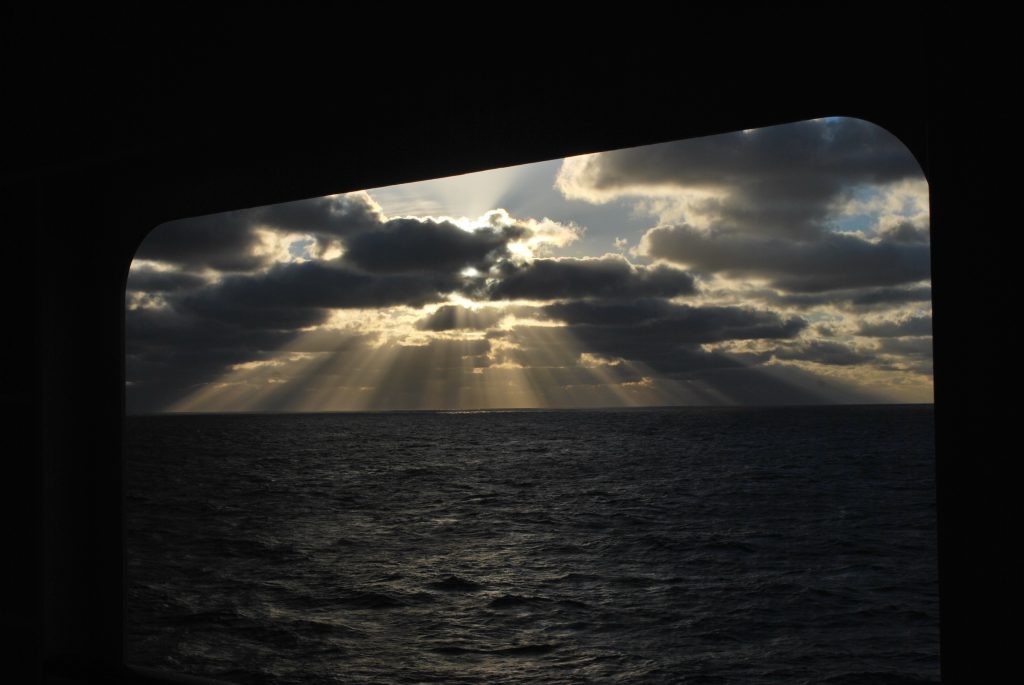
Nearing sunset. * Photo: ted Scull
Be sure to get professional advice on how to minimize the effects, especially if it is one of the first times you have taken a cruise. There are lots of remedies and dietary suggestions, and the right one for you can lessen your chances of getting seasick.

Sunsets at sea don’t come any better. * Photo: Ted Scull
© This article is protected by copyright, no part may be reproduced by any process without written permission from the author. All Rights Reserved. QuirkyCruise.com.

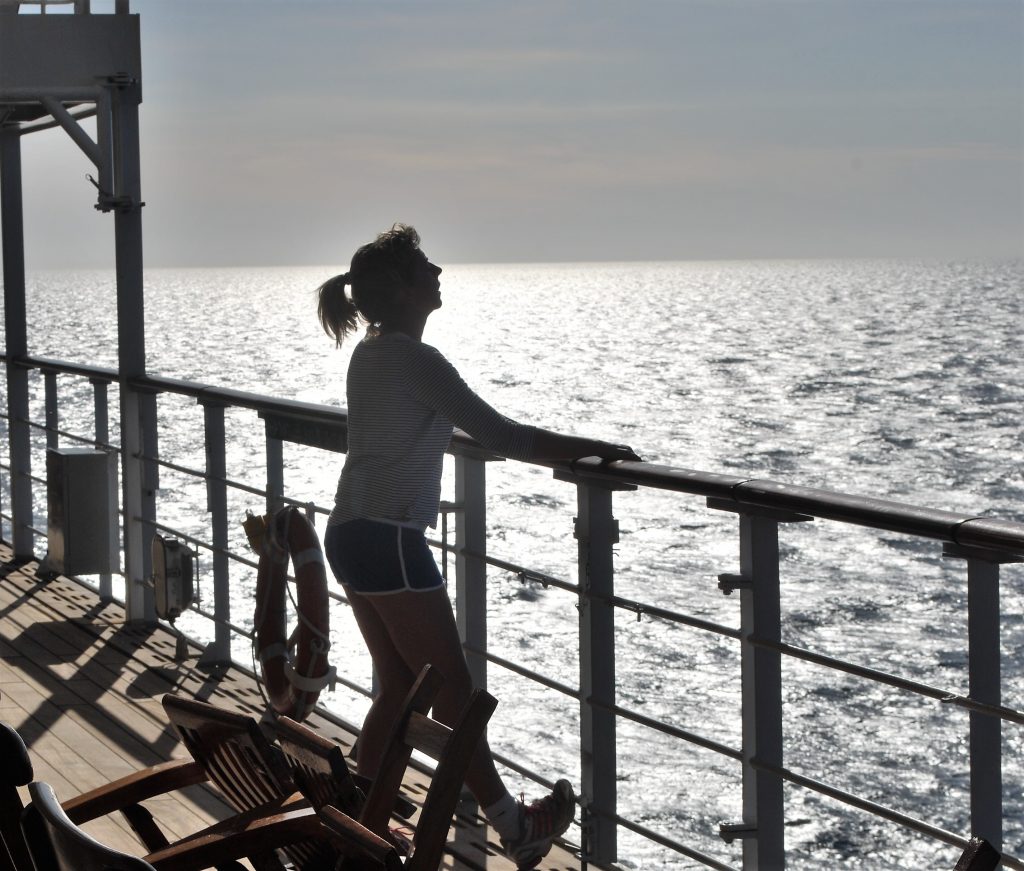

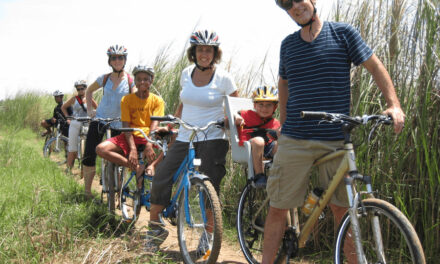










 HEIDI SARNA
HEIDI SARNA











